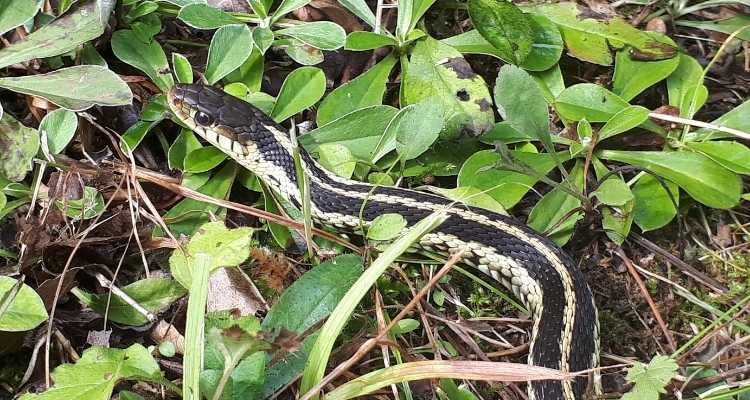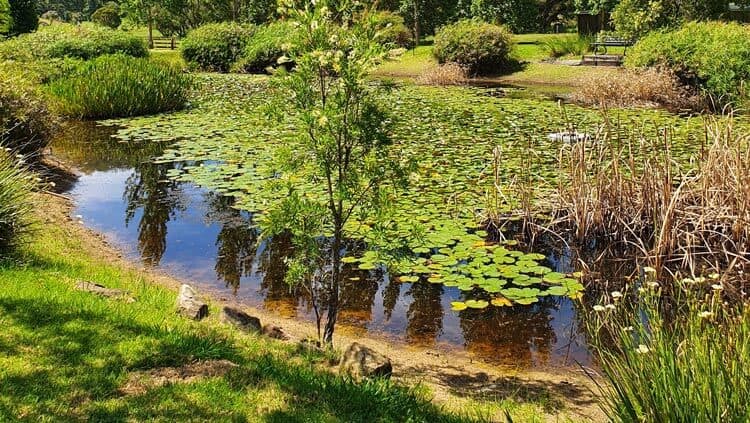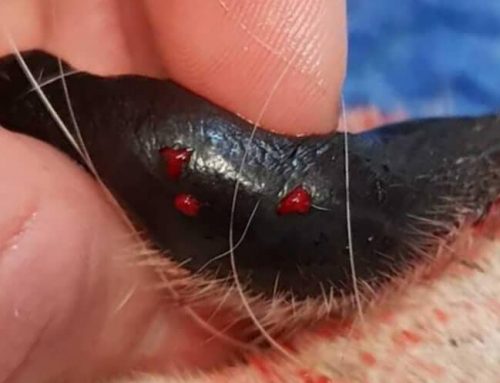How To Get Rid Of Snakes From Your Backyard
For many of us living with snakes is a fact of life – but that doesn’t make it any easier and I’m guessing you’d prefer not to come face to face with them in the backyard – or risk pets getting close and perhaps receiving a bite.
Thankfully for us, snakes are quite shy animals who don’t really want anything to do with us or our pets.
However, they are beneficial to our ecosystem because they do eat mice, lizards, frogs, grubs, insects, and other pests as well as being food for other wildlife such as hawks.
Chances are if you see snakes locally, it’s usually a good sign that your local ecosystem is healthy.
Although not all species of snakes in North America and Australia are harmless, there are some highly venomous snake species that can pose quite a risk to both us and our pets.
Knowing how to keep them at bay – is worthwhile.
Well, we’re never going to be able to prevent snakes 100%. It’s impossible. But there are definitely a few dos and don’ts.
In this article, we cover some top tips for keeping snakes away from your backyard, and how to keep your pets safe.
We’ll also point out all the stupid myths and old wives’ tales that perpetuate about the use of snake repellents so you don’t waste your time, your money, or put yourselves and your pets at risk.
After reading this article make sure you head over to our article on Snake Bite Emergency First Aid to learn what to do if your dog cat or horse is bitten by a snake.

Myths About Snake Repellents – What Don’t Work
Before discussing what to do to keep snakes away, let’s cover the myths that are perpetuated in many articles you’ll see about snake repellents.
Using Mothballs To Repel Snakes
The number one myth is probably the one that recommends using mothballs to repel snakes. This is quite hilarious.
There is NO science to back this, what’s more, mothballs are poisonous to children and our pets.
Mothballs are usually either made from naphthalene or paradichlorobenzene.
Naphathalene is the more toxic of the two – not only does it cause intense headaches but if consumed it can cause haemalytic anaemia.
Haemalytic anaemia is the destruction of red blood cells, and as red blood cells carry oxygen, there is less oxygen circulating around the body.
This results in difficulty breathing and the inability of organs to function appropriately, ultimately resulting in death.
It’s a no-brainer – please don’t use these.
Oils That Repel Snakes
Many articles recommend spraying the area with garlic oil, cinnamon and clove oil, cedar oil, or vinegar.
We cannot recommend or condone the use of these oils as snake repellents.
What’s interesting is the recommendation to spray these substances on the ground, which is a bizarre recommendation in itself.
The sheer volume required to have any effect is huge, plus any rain will result in dilution.
The studies that have shown that cinnamon, clove or eugenol oil work – advise spraying the oil ON the snake – not on the ground.
What’s more, depending on your location, you will likely require a permit from your Fish and Wildlife Service before you are permitted to use these oils.
While these oils might be deemed natural snake repellents giving you the feel-good warm fuzzies – they can be harmful to other species.
Use of oils as a snake repellent cannot be recommended.
Plants That Repel Snakes
Although many articles will endorse plants that repel snakes, sadly there is no plant that will rid snakes from your garden.
Forget planting onions and garlic, give marigolds a miss (unless you love the colour) and think again when considering Mother-In-Law’s Tongue.
Lemongrass is another on the old wives’ tale list – it won’t repel snakes, and sadly doesn’t kill mosquitos when alive either.
Ultrasonic Snake Repellers
Vibrating or sound snake repellents are another favourite solution that sadly has no efficacy.
It is thought that the emission of ultrasonic vibrations into the ground, will send a message to the snake to keep well away.
It might be great in theory but fails in practice.
VIDEO: Dr Leigh Discusses How To Keep Snakes Away From Your House
How To Repel Snakes From A Backyard
The best way to repel snakes from a backyard is to reverse engineer their needs.
What habitat encourages snakes to thrive?
The vast majority of snakes prefer to live where there is an abundant food supply and a consistent water source is present.
Shelter is important to protect them from overhead predators like birds of prey.
To put it succinctly – snakes enter areas that are inhabited by us – when they are searching for food and water.
Therefore to minimise snake encounters in our backyards, we need to make the environment as unappealing as possible.
Snakes need an abundant source of food, water and shelter to thrive.
Remove The Source Of Food
Rats and mice are the primary food sources for snakes, it, therefore, makes perfect sense that keeping rats and mice at bay will go a long way to minimising their presence.
Some tips to keep rat and mice numbers down:
- keep pet food and birdseed in animal-tight sealed tins, preferably inside
- feed pets inside and remove uneaten food promptly
- don’t scatter bird seed across your lawn or use a bird feeder
- if you must lay rat or mice bait – be incredibly careful that you don’t harm your pets. Check out our article on rat bait poisoning and what you need to do if your pet eats some.
- chickens and bird aviaries can be particularly appealing to snakes, not only as a food source but because they attract rats and mice. It’s worthwhile fencing chicken pens very well, digging snake-proof fencing very deep.
- compost is also a great source of food scraps for rats and mice – keep these bins well covered

A compost bin containing food scraps with no lid will attract rats.
Minimise Water Elements
Remember snakes also need a source of water.
This doesn’t necessarily mean a river, creek or pond.
Often a leaking pipe or hose that creates pools of water is enough to encourage a snake to visit.
While natural water sources can be difficult to remove or manage, it’s a good idea to keep manmade drains covered and make sure there are no leaky pipes around tanks and taps.

Ponds can attract snakes.
Remove Potential Cover For Snakes
Snakes are attracted to cool, dark places that can provide them with cover and shelter.
Keeping your lawn short, the garden weeded, and plenty of space under trees and shrubs minimises hiding areas.
Remove scrap corrugated iron, wood logs or piles of leaf litter or trash that are close to your house.
Seal entry points to your home’s crawl space or basement.
Plenty of snakes particularly pythons, like to climb and will try to enter your house via overhanging vegetation.
Keeping tree branches from reaching your roof will help stop this.
Use snake-proof netting or screens on doors and windows and over gaps.
Other things you can try and do include fencing your property with special snake-proof fencing.
Albeit, this can be an expensive option and doesn’t always work.

On this property, note how the shrubs are trimmed off the ground so that snakes can easily be seen and avoided.
When Out And About Around Your Property
The time of the year and where you live can dictate when you might find or see the most snakes.
In areas that are typically hot all year round – the temperature is not an important driver of snake activity.
In the Northern Regions of Australia snakes rarely bask in the sun as it is too hot, and are far more active after rains when there is plenty of water and prey.
In more temperate areas, we see high activity in the morning, dusk, and during the night when temperatures are not as high.
Don’t forget when snake breeding seasons occur.
The mating season is when snakes can be at their most aggressive.
It is different for each species, but generally, snakes breed during late winter or spring.
At this time of year, it’s incredibly important to take extra care when you are out and about in areas where there is high snake activity.
Make sure you keep dogs on a leash, educate your children to be snake-smart and always carry a first aid kit with a compression bandage.
Snake Aversion Training For Dogs
Snake aversion training is fraught with controversy.
The most common snake aversion training used is the application of an electric shock collar that is triggered when a snake is confronted.
This is known as a positive punishment i.e. an aversive stimulus is added to the situation.
In this case, the dog receives an aversive stimulus i.e. pain from a shock when they confront a snake.
This type of training can be incredibly hit and miss and frequently doesn’t work.
Some dogs may even have the opposite reaction and become fearful or aggressive, particularly if there is operator error.
Instead, many vets and behaviourists prefer to concentrate on what can be controlled.
Make sure your dog has excellent recall and will stop, wait and leave when asked.
These are basic skills that all dogs should know – it means that no matter the situation – a busy road, finding roadkill or a package of food on the path – you can make them stop and wait or return to you.
Of course, this doesn’t protect them if they are in a yard by themselves or out of view.
This is when you basically need to take your chances.
Although if snakes are common and you practice stop and return enough – many dogs will do this even on their own.
If you are regularly finding snakes on your property then it would be worthwhile having a professional snake catcher on speed dial.
Your local animal control service will likely have details for these people.
Snake catchers will attend, catch and bag the snake and move them to an area away from people and pets to an environment where they will thrive.
What’s the most effective snake repellent that you’ve used to keep snakes away from your property? Tell us in the comments below.




Leave A Comment